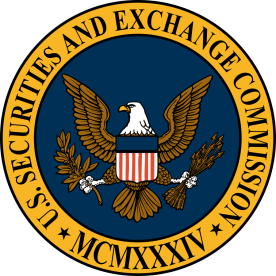On March 20, 2019, the Securities and Exchange Commission (SEC) adopted amendments to modernize and simplify certain disclosure requirements in Regulation S-K, and related rules and forms, consistent with the SEC’s mandate under the Fixing America’s Surface Transportation (FAST) Act. These amendments, first proposed in October 2017, are effective May 2, 2019, with certain exceptions discussed herein. These amendments will affect Regulation S-K and, among other forms, annual, quarterly, and current reports on Form 10-K, Form 10-Q, and Form 8-K, respectively, as well as registration statements and prospectuses.
Overview
Many of the changes are designed to reduce burdens on registrants due to duplicative or outdated requirements. For example, the SEC has eliminated the requirement that a registrant’s Management’s Discussion and Analysis (“MD&A”) cover the earliest year if three years of financial statements are included in a filing, provided certain requirements are met. Further, registrants will no longer be required to file confidential treatment requests in connection with the redaction of exhibits. To modernize the requirements, the SEC eliminated certain requirements that originated from the pre-EDGAR filing regime and made technical updates to several disclosure requirements.
According to the SEC, a second purpose of the amendments is to increase the readability and ease of access to information provided to investors in disclosure documents. As a result, some of the rule changes impose new obligations on registrants, including the addition of a new Form 10-K exhibit and additional obligations governing hyperlinking and XBRL tagging. The major effects of the changes are described below. In addition, a chart summarizing the amendments is attached for reference as Annex A.
The SEC made similar changes to the rules governing investment companies, investment advisors, and foreign private issuers, which are not discussed in this client alert.
Management’s Discussion and Analysis (Item 303 of Regulation S-K)
No Need to Discuss Earliest of Three Years When Three Years of Financial Statements Are Presented. In the MD&A, registrants are required under Item 303 of Regulation S-K to discuss all periods presented in the audited financial statements included in the filing. For most companies, this requires a discussion of the three most recent fiscal years. Because in many instances the discussion of the earliest of the three years is duplicative of that which was included in the prior year’s filing, the SEC amended Item 303 to permit the omission of such discussion, provided (i) discussion of the earliest year was included in a prior EDGAR filing under either the Securities Act or the Exchange Act that required MD&A disclosure and (ii) the current filing includes a statement identifying the location in the prior filing where the discussion may be found. This marks a significant expansion of the amendment set forth in the 2017 proposing release, which would have only permitted the omission of discussion of the earliest year if the registrant first determined that the discussion was not material to an understanding of the current period results. Further, the amendment proposed in 2017 would have limited the applicable “prior filing” to only the prior year’s Form 10-K.
Nonetheless, registrants may continue to provide discussion of the entire previous three-year period if it’s material to an understanding of a registrant’s financial condition, changes in financial condition, and results of operations. In fact, the SEC “encourage[s] registrants to take the opportunity to reevaluate their [MD&A] disclosure[s] in light of these amendments to determine whether a discussion of the earliest year’s information remains material.” Smaller reporting companies and certain emerging growth companies are not affected by the revisions, as they are only required to include two years of audited financial statements in their filings.
No Mandated MD&A Format. The SEC also eliminated an instruction to Item 303 that required the MD&A be in a year-to-year format. Under the revisions, the registrant may use any presentation that “enhances a reader’s understanding.” Practically speaking, the SEC anticipates that many registrants will continue to provide the MD&A in year-to-year format, as this is a “familiar and, in many cases, appropriate method of presentation.” However, the SEC recognizes that this presentation may not be the most effective format for every registrant, and accordingly has amended the rule to provide greater flexibility.
Confidential Treatment Requests
No Longer Required to File Confidential Treatment Requests. Prior to the amendments, a filer seeking to omit confidential information from a publicly filed exhibit must have first submitted a detailed confidential treatment application to the SEC identifying both the confidential information and the legal grounds under the Freedom of Information Act pursuant to which the information may remain confidential. Additionally, the registrant must have marked where in the filed exhibit confidential information had been omitted.
Under the amended rules, registrants may omit confidential information from material contracts filed under Item 601(b)(10) of Regulation S-K, as well as from plans of acquisition, reorganization, arrangement, liquidation, or succession filed under Item 601(b)(2), without first requesting confidential treatment from the SEC, provided the redacted information (i) is not material and (ii) would be competitively harmful, if publicly disclosed. As with the pre-amendment rule, the exhibit must be clearly marked to indicate that confidential information has been omitted. The SEC will continue to selectively review filings to assess whether redactions are compliant with this new rule and has retained the ability to require a registrant to file an amended version of the exhibit if it is unable to support its claim for confidential treatment. The SEC adopted parallel amendments to certain other forms, including Item 1.01 of Form 8-K, so as to maintain a consistent approach to the exhibit filing requirements across forms. Unlike the majority of the amendments, this amendment is effective immediately upon publication in the Federal Register on April 2, 2019.
May Omit Personally Identifiable Information. The amended rules also allow registrants to omit personally identifiable information without first submitting a confidential treatment request to the SEC. This amendment codifies current SEC practice.
Other Exhibit Filing Changes
Schedules and Attachments to Exhibits May Be Omitted in Most Cases. Under the amended rules, registrants may omit schedules and similar attachments to all exhibits filed under Item 601, provided the omitted schedules and attachments (i) do not contain material information and (ii) were not otherwise disclosed in the exhibit or the disclosure document. Registrants must also file a list briefly describing the contents of any omitted attachment or schedule.
Material Contracts Two-Year Look-Back Period Limited to Newly Reporting Registrants. Once effective, the amended rules will require only “newly reporting registrants” (as that term is defined in the rule) to file material agreements not made in the ordinary course of business and that were entered into during the two years prior to the filing. Registrants with established reporting histories will be required to file only those material contracts not made in the ordinary course of business that will be performed in whole or in part at or after the filing of the registration statement or report.
Description of Property (Item 102 of Regulation S-K)
Registrants are no longer required to provide descriptions of the location and general character of the registrant’s physical properties, unless the disclosure is material to the registrant. As a result, registrants may now describe property on an individual basis or on a collective basis, or provide no disclosure at all, based on the registrant’s determination of which, if any, of its physical properties warrant discussion based on materiality, in light of the registrant’s particular circumstances. Importantly, the SEC explicitly noted that disclosures specific to the mining, oil and gas, and real estate industries are outside the scope of this particular amendment. The SEC has separately adopted revisions for these industries in other rules and in industry-specific guides.
New Form 10-K Exhibit Requirement
Registrants must now include a description of all securities registered pursuant to Section 12 of the Exchange Act (required by Item 202 of Regulation S-K) as a new exhibit to Form 10-K. Although the SEC acknowledges that this disclosure will necessarily overlap with disclosures that may be found in publicly available registration statements, the SEC believes that this new requirement will facilitate investors’ access to information without imposing significant additional costs. All registrants with a class of securities registered under Section 12 of the Exchange Act will be required to file an initial exhibit with their first Form 10-K after the amendments are effective. Registrants should note that this amendment does not relieve existing obligations to disclose material modifications to the rights of security holders, as well as amendments to the registrant’s articles and bylaws, on Form 8-K and in proxy statements under Schedule 14A throughout the year. The Form 10-K exhibit will need to be updated only annually to reflect all material and immaterial changes made during the year.
Section 16 Reporting Compliance
Companies May Rely on EDGAR Filings. Directors, executive officers, and 10 percent or more beneficial owners are required to file reports with the SEC to report transactions in the securities of the registrant that are registered pursuant to Section 16 of the Exchange Act. Electronic filing of these forms (Forms 3, 4, and 5) was mandated by the Sarbanes-Oxley Act of 2002; however, Item 405 of Regulation S-K was never updated to reflect this requirement and still spoke of determining late filings by a review of copies of reports provided to the registrant by the filing persons. In recognition of this change, the SEC amended Item 405 to clarify that registrants may determine delinquent Section 16 filings for purposes of proxy statement disclosure solely by a review of reports filed on EDGAR and any written representation from a reporting person that no Form 5 was required to be filed. Registrants will also be permitted, though not required, to consider facts outside of the EDGAR filings to determine whether any late filings need to be reported. For example, if a registrant knows of a transaction that has not been reported, it may consider disclosing this fact in its disclosure regarding delinquent filings.
Amended Required Caption for Disclosure of Late Filers; Late Filer Disclosure Box Removed from Form 10-K Cover Page. Registrants are required to disclose in annual meeting proxy statements whether there have been any late filings under the caption “Section 16(a) Beneficial Ownership Reporting Compliance.” The SEC amended the heading required by Item 405 to “Delinquent Section 16(a) Reports.” The SEC encourages registrants to exclude the heading and disclosure altogether when it has no Section 16(a) delinquencies to report. Consistent with these amendments, the SEC removed the checkbox from the cover page of Form 10-K whereby the registrant would indicate that it has no disclosure of Section 16(a) delinquencies.
Management and Corporate Governance (Items 401 and 407 of Regulation S-K)
Information about Executive Officers. The SEC amended Item 401 to clarify that the executive officer disclosures required by the item may be provided in either the registrant’s annual report on Form 10-K or in the registrant’s definitive proxy statement or information statement, but need not be provided in both. Additionally, the SEC revised the caption of this disclosure (if and when included in Form 10-K) to “Information about our Executive Officers.” A registrant that provides this disclosure on Form 10-K should update this caption accordingly.
No Compensation Committee Report for Emerging-Growth Companies. The SEC clarified that emerging-growth companies, in addition to smaller reporting companies, are exempt from the requirement to include a Compensation Committee Report in which the members of the compensation committee recommend inclusion of the company’s Compensation Discussion and Analysis (“CD&A”) in the proxy statement, since emerging-growth companies are not required to prepare a CD&A. The existing exemption only referenced smaller reporting companies.
Updated Text for Audit Committee Report. The SEC also updated Item 407 to remove the outdated reference to AU Section 380, Communications with Audit Committees, replacing it instead with a reference to “the applicable requirements of the Public Company Accounting Oversight Board (‘PCAOB’) and the [SEC].” Though many registrants have already updated this reference in relevant forms, reports, and statements, companies that have not yet made this change should now do so.
Registration Statement and Prospectus Provisions
Risk Factors. The SEC amended Item 503(c), requiring disclosure of the most significant risk factors of the offering, by removing the enumerated example risk factors from the instructions. The SEC has noted that inclusion of this “boilerplate” list of examples in its instructions is inconsistent with the SEC’s “principles-based” approach to risk factor disclosure, and for that reason has amended the rule in this way.
Market for Securities. The SEC expanded the scope of the cover page requirement regarding disclosure of the trading symbols and any national securities exchanges on which the registrant’s securities are traded. Specifically, the SEC now requires registrants to also disclose any United States markets where the registrant, through the engagement of a registered broker-dealer, has actively sought and achieved quotation, such as an over-the-counter market and the applicable trading symbol.
Preliminary Prospectus Legend. The “red herring” legend that must be placed on any preliminary prospectus may now exclude the statement that the prospectus is not an offer to sell or a solicitation of an offer to buy securities in states where the offer or sale is not permitted, if the offering is not prohibited by state blue sky laws, as many such state laws are now preempted by federal law in various offerings.
Potentially Misleading Name. The SEC removed the requirement that a registrant with a name similar to that of a “well-known company” change its name, if disclosure of additional information is insufficient to eliminate any confusion. As a result, a registrant with a name that is the same as or similar to a well-known company need only provide additional clarifying disclosure to mitigate the potential for any confusion.
Undertakings. The SEC eliminated a number of undertakings in registration statements that are either no longer necessary or have become obsolete.
Expanded Obligation to Hyperlink; Incorporation by Reference (Item 10(d) of Regulation S-K, Rule 411 of the Securities Act, Rule 12b-23 of the Exchange Act and Certain Forms)
Must Hyperlink Documents Incorporated by Reference; Expanded Ability to Incorporate by Reference. The SEC sought to harmonize the various rules under the Securities Act and the Exchange Act that permit filers to incorporate previously filed information by reference into their filings. In order to facilitate greater investor access to disclosure, the SEC has amended its rules to require registrants to include hyperlinks to information incorporated by reference into a registration statement, prospectus, or Exchange Act report pursuant to Rule 411 and Rule 12b-23 as the case may be, if that information is available on EDGAR.
Additionally, in recognition of the general availability of documents on EDGAR, the SEC amended Item 10(d) of Regulation S-K to eliminate the prohibition on incorporating a document by reference if the document has been on file with the SEC for more than five years. However, under the amended rule, a registrant may not incorporate by reference a document that has been destroyed, as the SEC believes this would render the disclosure incomplete, unclear, or confusing.
Prohibition Against Cross-References and Incorporation by Reference into Financial Statements in Most Instances. Pursuant to the rule amendments, registrants may no longer, in the audited financial statements, incorporate by reference into or cross-reference to information outside of the financial statements, unless specifically permitted or required by SEC rules or by US Generally Accepted Accounting Principles, International Financial Reporting Standards or the International Accounting Standards Board. The SEC amended the rules in this way to address concerns that referencing information outside the audited financial statements could create confusion about which information was audited or reviewed by the independent auditor.
Amendments to the Cover Pages of Certain Forms
Tagging of Cover Page Data. All data points on the cover pages of Forms 10-K, 10-Q, and 8-K must now be filed in HTML format and tagged in Inline XBRL. Compliance with these requirements will be phased in according to the following schedule:
|
Operating Companies |
Compliance Date |
|
Large accelerated filers |
Reports for fiscal periods ending on or after June 15, 2019 |
|
Accelerated filers |
Reports for fiscal periods ending on or after June 15, 2020 |
|
All other filers |
Reports for fiscal periods ending on or after June 15, 2021 |
Trading Symbols. Additionally, registrants filing reports on Forms 10-K, 10-Q, and 8-K must now include the trading symbol for each class of its registered securities on the cover page of the reports.
ANNEX A
|
Amended Rules |
|
|
Rule |
Summary of Amendment |
|
Management’s Discussion and Analysis Regulation S-K, Item 303 |
Registrants will generally be able to exclude discussion of the earliest of three years in MD&A if they have already included the discussion in a prior filing under the Securities Act or Exchange Act that required MD&A disclosure and they disclose where the discussion may be found. |
|
Description of Property Regulation S-K, Item 102 |
Registrants are no longer required to provide descriptions of physical properties, if immaterial. This amendment does not apply to registrants in the mining, oil and gas, and real estate industries. |
|
Management, Security Holders, and Corporate Governance Regulation S-K; Items 401, 405, and 407 |
Information about executive officers may be provided in either a registrant’s annual report on Form 10-K or in its definitive proxy statement or information statement under the revised caption “Information about Our Executive Officers.” New required caption for disclosure of late filers: “Delinquent Section 16 Reports”; disclosure only required if there are late filings to report. Registrants may rely only on Section 16 reports filed on EDGAR in determining Section 16(a) compliance. The SEC clarified that emerging-growth companies are exempt from the requirement to provide a compensation committee report. |
|
Registration Statement and Prospectus Provisions Regulation S-K; Items 501, 503, 508, and 512 |
Registrants with names similar to “well-known companies” are no longer required to change their names. In addition to the national exchanges, registrants must now include the principal US markets where, through the engagement of a broker-dealer, quotation of their securities was actively sought and achieved. Preliminary prospectuses are no longer required to include a reference to state law in the “red herring” legend on the cover page if the offering is not prohibited by state blue sky laws. The SEC amended its rule governing risk factor disclosures to remove the boilerplate examples from the instructions. This change is unlikely to impact current risk factor disclosures, but serves to underscore the SEC’s “principles-based” approach to risk factor disclosures. The SEC removed several undertakings disclosure requirements that are no longer necessary or have become obsolete. |
|
Exhibits Regulation S-K, Item 601 |
Registrants will not be required to file attachments to their material agreements if such attachments do not contain material information or were not otherwise disclosed. Only newly reporting registrants will be required to file material contracts that were entered into within the two years prior to the filing of the applicable registration statement or report. Registrants may omit personally identifiable information without first submitting a confidential treatment request to the SEC. Registrants will be able to omit confidential information in material contracts and certain other exhibits without submitting a confidential treatment request to the SEC, so long as the information is (i) not material and (ii) would likely cause competitive harm to the registrant if publicly disclosed, subject to the SEC’s selective review for compliance. Registrants must include the description of securities (required under Item 202) as an exhibit to annual reports filed on Form 10-K. |
|
Incorporation by Reference Regulation S-K, Item 10(d); Securities Act Rule 411(b)(4); Exchange Act Rules 12b-23(a)(3) |
Registrants will no longer be required to file as an exhibit any document or part thereof that is incorporated by reference in a filing, but instead will be required to provide hyperlinks to documents incorporated by reference. Generally, registrants may no longer, in the audited financial statements, incorporate by reference into or cross-reference to information outside of the financial statements. The SEC eliminated the five-year limit on documents incorporated by reference. |
|
Cover Pages of Certain Forms Forms 8-K, 10-Q, and 10-K |
Registrants will be required to tag all cover page data in Inline XBRL, subject to a phase-in period beginning June 15, 2019, for large accelerated filers. Registrants will be required to disclose on the cover page the national exchange or principal US market for their securities, the trading symbol, and title of each class of securities. |






 i
i

